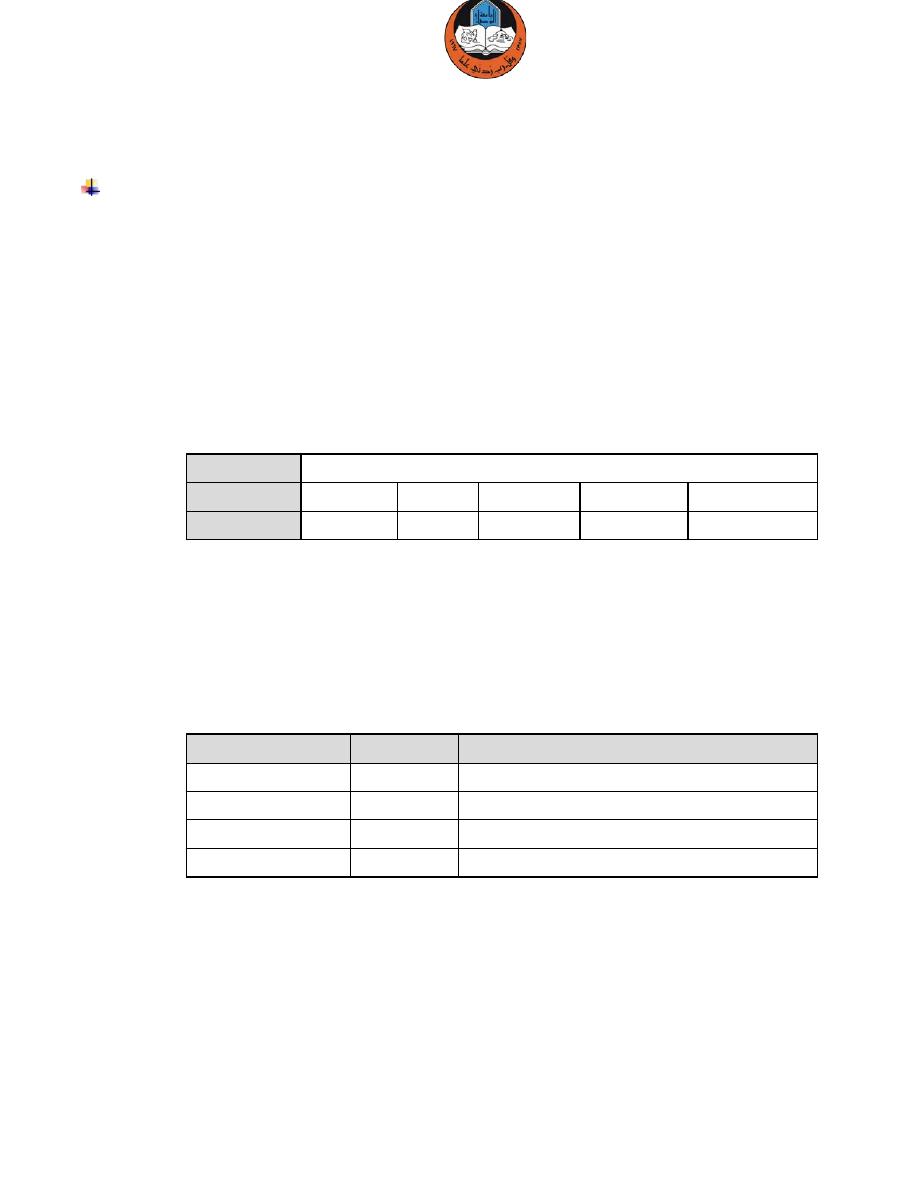
Lecture1: Data structure and algorithms introduction, Program analysis, Array, MATLAB introduction
2
Computer Algorithms
& Programming
Mustafa Al-Qassab
2015-2016 Kirkuk
Introduction to Data Structure
Definitions:
Some terminologies are used in data structures subject, getting to know these
words is a good start.
Data
The term data is used to describe a singular value or a set of plural values.
Examples of data can be: 100, Ali, 1/1/2016, female, etc.
Entity
This term entity means that something can have certain attributes which can be
assigned values. For instance, an employee can be an entity and have values as
shown in table below:
Entity
Student
Attributes Name
Age
Year
Sex
Average %
Values
Ahmed
19
2
Male
75
Table: attributes and values in an entity.
This is called entity set and each attribute has a certain range of values or
possibilities that is called domain. For example, the attribute sex has the domain
{Male, Female}.
Information
When data is assigned to attributes, the combination is called information. So
information is meaningful data. See table below.
Attribute
Data
Meaning
Name
Ahmed
The student’s name is Ahmed
Age
19
The student’s age is 19 years old
Year
2
The student is in year 2
Average %
75
The student’s average is 75%
Table: attribute and data gives information.
Difference between data and information
Data and information are not exactly the same. However, there is a relation
between them as shown in figure below. For better understanding, let’s consider
that there is a set of data {9, 19, 2}, this data is not useful unless it has an
attribute that each value should be related to. If the related attributes are {month
of birth, age, year}, the information is created.
1
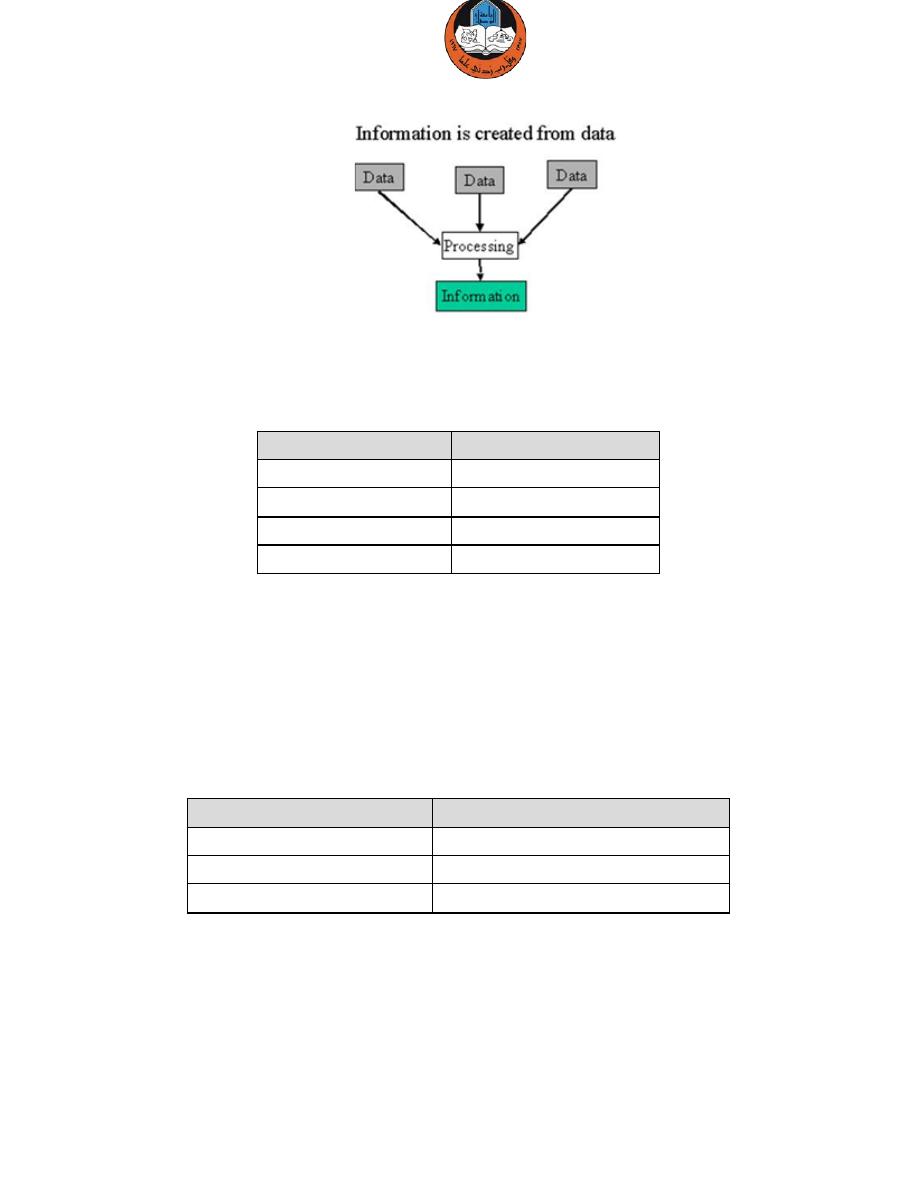
Lecture1: Data structure and algorithms introduction, Program analysis, Array, MATLAB introduction
2
Computer Algorithms
& Programming
Mustafa Al-Qassab
2015-2016 Kirkuk
Figure: The relation between data and information.
Data Type
The term data type refers to the type of data that may appear in computation.
See table for some examples.
Data
Data Type
2
Numeric (integer)
1/1/2013
Date
Mosul University
String
11, 13, 15, 17, 19
Array of integers
Table: examples of data and its type.
Real, character, boolean, complex, etc. are also some other frequently used data
types.
Build-in Data Type
Each programming language has a certain set of data types called build-in data
type. For example, some of the available build-in data types in programming
languages are shown in table below.
Programming language Some of build-in data type
C++
int, float, char, double, etc.
FORTRAN
INTEGER, REAL, LOGICAL
Pascal
Boolean, Character, Integer
Table: some build-in data types.
Build-in data types help users in programming. When a user declares a variable
of type float for example, then many things have already been determined, such
as; the value type of stored data, the amount of memory needed to store the
data, the possible operations that can be done, etc.
2
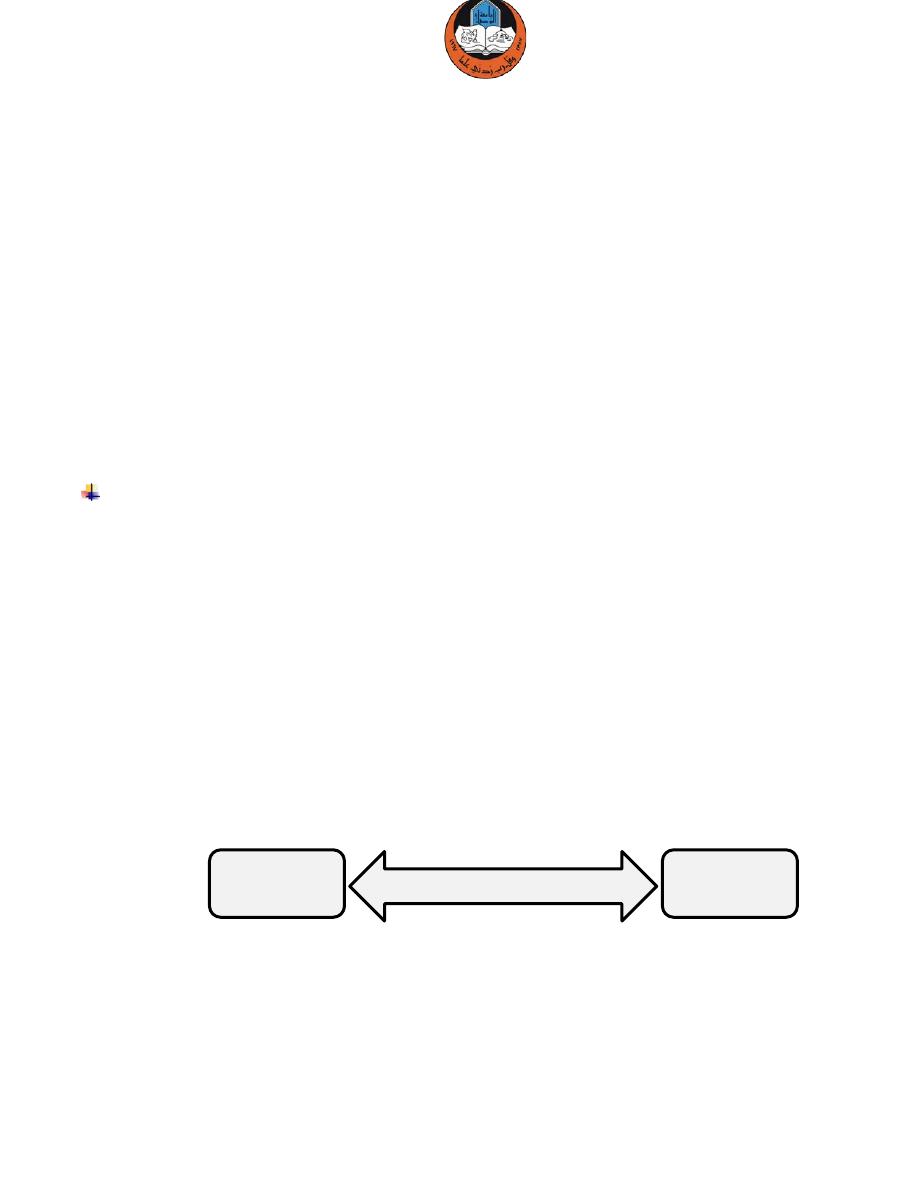
Lecture1: Data structure and algorithms introduction, Program analysis, Array, MATLAB introduction
2
Computer Algorithms
& Programming
Mustafa Al-Qassab
2015-2016 Kirkuk
Abstract Data Types
The abstract data type is also named user-defined data type.
When a programmer needs a special data type that is not defined or available in
the build-in data type set, then he may define and implement a data type that fits
his purpose. In this case the programmer has to specify several things including;
how to store a value for that data, the operations that can be applied on the
variables of that data, the amount of memory required in order to store a variable
of the defined data type.
An example of a new data type can be storing a date in the form dd/mm/yy. This
form is not available in the build-in data type, so the programmer can create his
own type to store this kind of data. Structure/class in C/C++ and record in Pascal
are a way to create abstract data types.
Concept of Data Structures
Digital computers, essentially, manipulate and deal with only binary data, which
is data in terms 0’s and 1’s. However, real-life applications involve a wide range
of different types of real-time data, also called user data. User data can be name,
age, mathematical operations, etc.
So, the manipulation of user-data requires the following essential tasks:
1- Storage representation of user data: user data should be stored in a way that the
computer can understand it.
2- Retrieval of stored data: data that are stored in a computer should be
successfully retrieved in a way that the user can understand it.
3- Transformation of user data: this can be done by performing various operations
on user data so that it can be transformed from one form to another.
The figure below shows the relation between user and stored data.
Figure: the relation between user data and stored data.
The basic theory of computer science deals with the manipulation of various
types of data. This is where the concept of data structures comes from.
For any given kind of user data, its structure implies the following:
User Data
Transformation Operations
Binary Data
3
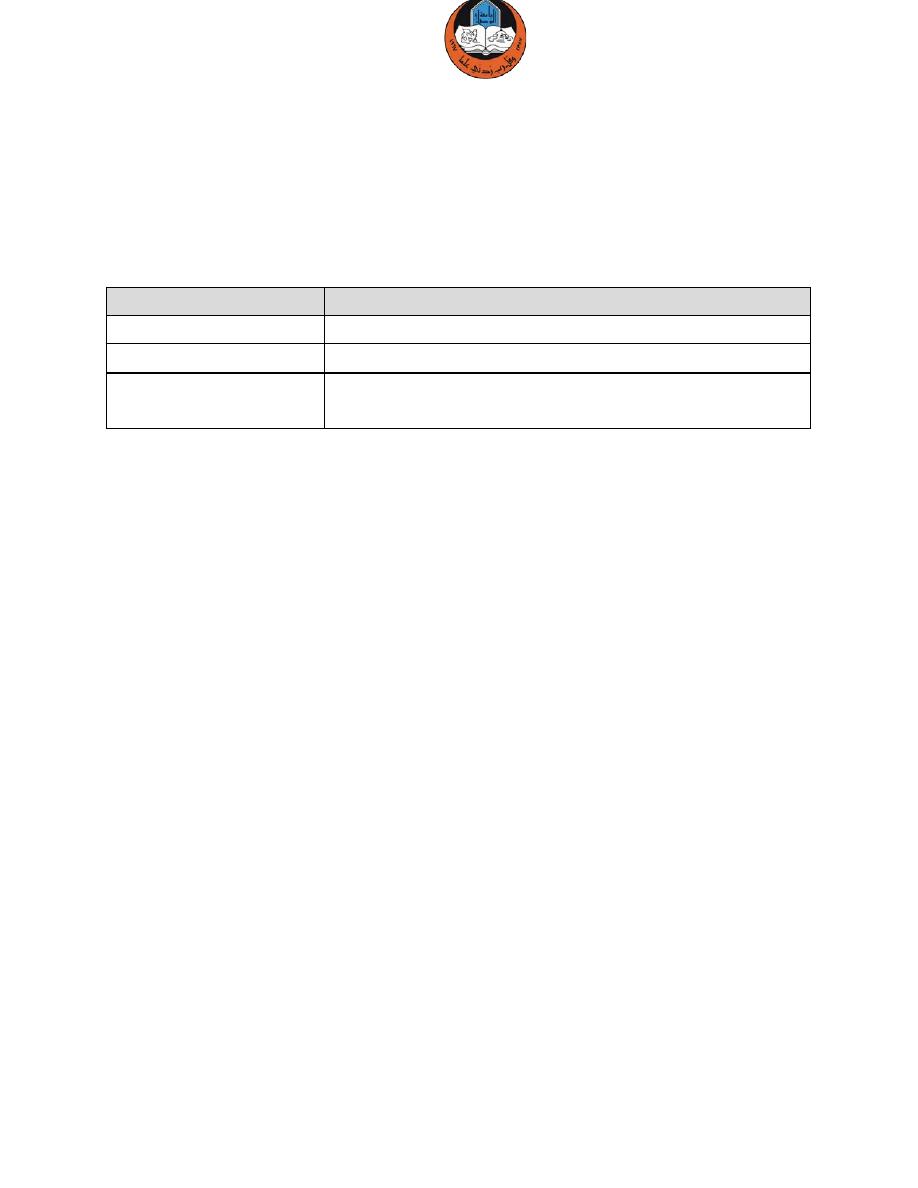
Lecture1: Data structure and algorithms introduction, Program analysis, Array, MATLAB introduction
2
Computer Algorithms
& Programming
Mustafa Al-Qassab
2015-2016 Kirkuk
1- Domain: is the range of values that the data may have. Also called data object.
2- Function: is the set of operations that can be legally applied to elements of data
object.
3- Aximos: is the set of rules that the operations need to be implemented.
Let’s take integer data type as an example, its structure implies the three
parameters as given in the table below.
Structure Parameter
Definition
Domain
0, -+1, -+2, -+3, etc.
Function
-, +, *, /, etc.
Aximos
A set of binary arithmetic to perform addition,
subtraction, division, multiplication operations, etc.
Table: structure parameter and definition for integer.
What is Algorithm?
It can be defined as a finite sequence of effect statement to solve a problem. An
effective statement is a clear, unambiguous instruction that can be carried out.
Thus an algorithm should special the action to be executed and the order in
which these actions are to be executed.
Algorithm Properties:
- Finiteness: the algorithm must terminate a finite number of steps.
- Non-ambiguity: each step must be precisely defined. At the completion of each
step, the next step should be uniquely determined.
- Effectiveness: the algorithm should solve the problem in a reasonable amount of
time.
Benefits of Using Algorithms:
The use of algorithms provides a number of benefits in:
1-
The development of the procedure itself.
2-
Decision-making becomes more rational process.
3-
Make the process more efficient and more consistent.
4-
Help ensure that variable or parts of the problem are not ignored.
5-
Allows more precise communication.
6-
Important part of analysis, control and evaluation.
4

Lecture1: Data structure and algorithms introduction, Program analysis, Array, MATLAB introduction
2
Computer Algorithms
& Programming
Mustafa Al-Qassab
2015-2016 Kirkuk
Example 1: Develop an algorithm that inputs a series of number and output their
average.
Sol.: a computer algorithm can only carry out simple instruction like:
-
"Read a number".
- "Add a number to anther number".
- "Output a number".
Thus an algorithm is:
1.
Read the number of numbers
2.
Read first number.
3.
While the number of numbers is not complete do; otherwise, GOTO step 9.
4.
Begin
5.
Add the number to the accumulated sum.
6.
Increment the count of numbers entered.
7.
Read next number.
8.
GOTO step 3.
9.
End
10.
Evaluate the average.
11.
Print the average
What is Flowchart?
A flowchart is a graphical
representation of an algorithm
or of a portion of an algorithm.
Flowcharts are drawn using
symbols. The main symbols
used to draw a flowchart are
shown in following figure.
5
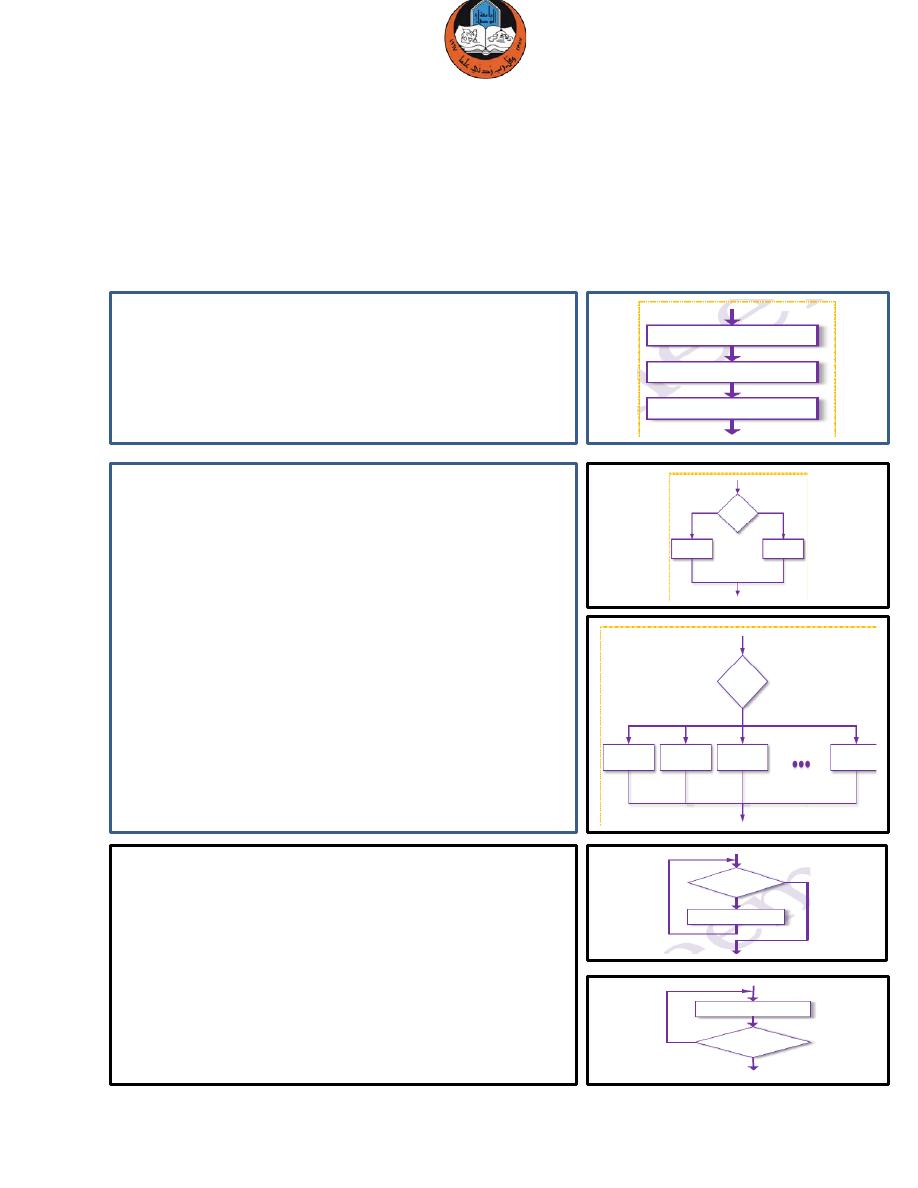
Lecture1: Data structure and algorithms introduction, Program analysis, Array, MATLAB introduction
2
Computer Algorithms
& Programming
Mustafa Al-Qassab
2015-2016 Kirkuk
The Main Flowchart Structures:
A structured flowchart is one in which all of the processes and decisions must fit
into one of a few basic structured elements. The basic elements of a structured
flowchart are shown in the previous table of the flowchart’s symbols. It should be
possible to take anyone of the flowchart’s symbol and enclose all of the blocks
within one of the following process structures.
1. Sequence Flowchart: is just a series of
processes carried out one after the other. Most
problems are represented by “Sequence
Flowchart” at the highest level (possible with a
loop from the end back to the beginning).
2. Selection Flowchart:
a- Binary- selection: The IF-THEN-ELSE
process logically completes the binary
decision block by providing two separate
processes. One of the processes will be
carried out in the each path from the
binary decision.
b- Multi-selection: its structure is useful in
representing a series of IF-THEN-ELSE
statements where there are more than
two choices to be made.
3. Repetition in Flowchart:
a- Pretest: the decision to execute the
process in the loop is made prior to the
first execution of the process.
b- Posttest: its structure differs from the
pretest structure in that the process
contained within the loop is always
executed at least one time.
6
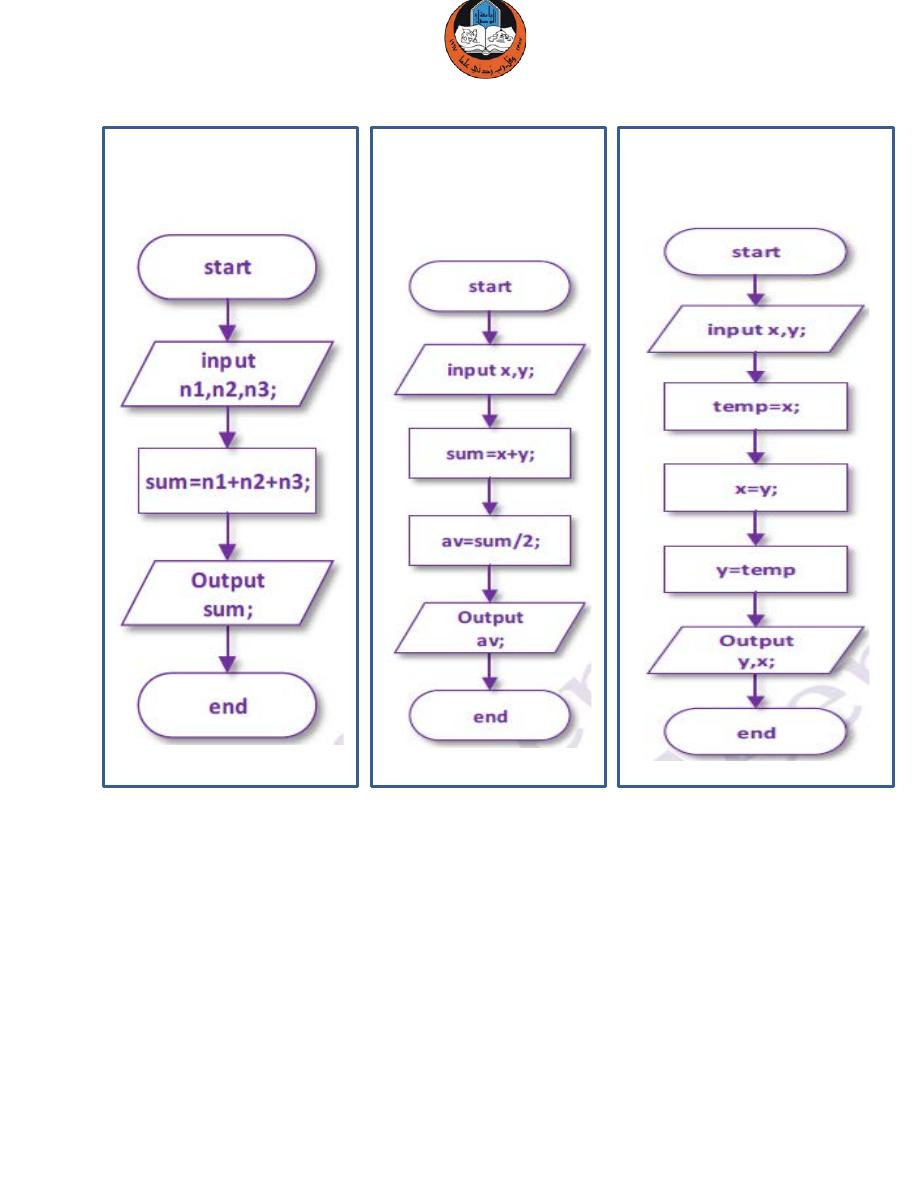
Lecture1: Data structure and algorithms introduction, Program analysis, Array, MATLAB introduction
2
Computer Algorithms
& Programming
Mustafa Al-Qassab
2015-2016 Kirkuk
Example 1:
Draw
flowchart to find the
sum of 3 given numbers
Example 2: Draw
flowchart to find the
average of 2 given
numbers.
Example 3:
Draw
flowchart to swap the
value of X and Y.
7
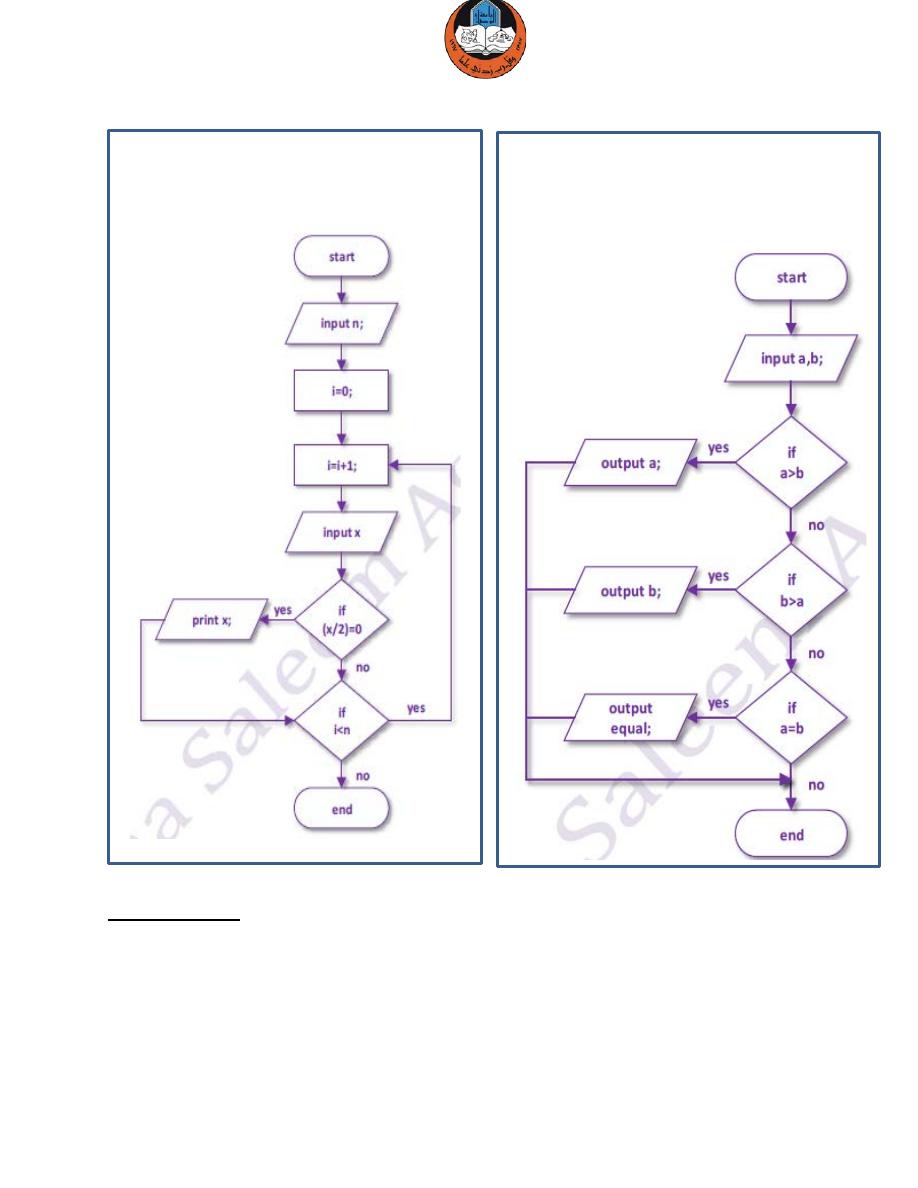
Lecture1: Data structure and algorithms introduction, Program analysis, Array, MATLAB introduction
2
Computer Algorithms
& Programming
Mustafa Al-Qassab
2015-2016 Kirkuk
Homework1:
Draw a flowchart to read a number till a negative number is entered, and then
calculate the sum of all the entered numbers.
Example 4: Draw flowchart to read
numbers (n) and print out all the
even numbers up to (n).
Example 5: Draw flowchart to read
two numbers then print out the greater
number.
[NOTE: if both are equal print “eq
8

Lecture1: Data structure and algorithms introduction, Program analysis, Array, MATLAB introduction
2
Computer Algorithms
& Programming
Mustafa Al-Qassab
2015-2016 Kirkuk
Program analysis
Representing information is fundamental to computer science. The primary
purpose of most computer programs is not to perform calculations, but to store
and retrieve information usually as fast as possible. For this reason, the study of
data structures and the algorithms that manipulate them is at the heart of
computer science.
There are often many approaches to solving a problem. How do we choose
between them? At the heart of computer program design are two goals:
1- To design an algorithm that is easy to understand, code, and debug.
2. To design an algorithm that makes efficient use of the computer’s resources.
Generally, a data structure is any data representation and its associated
operations. Even an integer or floating point number stored on the computer can
be viewed as a simple data structure. More typically, a data structure is meant to
be an organization or structuring for a collection of data items.
Given sufficient space to store a collection of data items, it is always possible to
search for specified items within the collection, print or otherwise process the
data items in any desired order, or modify the value of any particular data item.
Thus, it is possible to perform all necessary operations on any data structure.
However, using the proper data structure can make the difference between a
program running in a few seconds and one requiring many days.
A solution is said to be efficient if it solves the problem within the required
resource constraints. Examples of resource constraints include the total space
available to store the data and the time allowed to perform each subtask. A
solution is sometimes said to be efficient if it requires fewer resources than
known alternatives.
The cost of a solution is the amount of resources that the solution consumes.
Most often, cost is measured in terms of one key resource such as time, with the
implied assumption that the solution meets the other resource constraints.
9

Lecture1: Data structure and algorithms introduction, Program analysis, Array, MATLAB introduction
2
Computer Algorithms
& Programming
Mustafa Al-Qassab
2015-2016 Kirkuk
There is no sense in adopting a complex representation to “improve” a program
that can meet its performance goals when implemented using a simpler design.
When selecting a data structure to solve a problem, you should follow this three-
step approach:
1. Analyze your problem to determine the basic operations that must be
supported.
Examples of basic operations include inserting a data item into the data
structure, deleting a data item from the data structure, and finding a specified
data item.
2. Quantify the resource constraints for each operation.
3. Select the data structure that best meets these requirements.
A data structure requires a certain amount of space for each data item it stores, a
certain amount of time to perform a single basic operation, and a certain amount
of programming effort. Each problem has constraints on available space and
time.
For example, a bank must support many types of transactions with its
customers, but we will examine a simple model where customers wish to open
accounts, close accounts, and add money or withdraw money from accounts.
The typical customer opens and closes accounts far less often than he or she
accesses the account. Customers are willing to wait many minutes while
accounts are created or deleted but are typically not willing to wait more than a
brief time for individual account transactions such as a deposit or withdrawal.
From a database perspective, we see that ATM transactions do not modify the
database significantly. For simplicity, assume that if money is added or removed,
this transaction simply changes the value stored in an account record. Adding a
new account to the database is allowed to take several minutes. Deleting an
account need have no time constraint, because from the customer’s point of view
all that matters is that all the money be returned (equivalent to a withdrawal).
From the bank’s point of view, the account record might be removed from the
database system after business hours, or at the end of the monthly account
cycle.
10

Lecture1: Data structure and algorithms introduction, Program analysis, Array, MATLAB introduction
2
Computer Algorithms
& Programming
Mustafa Al-Qassab
2015-2016 Kirkuk
Programming Using C++
Libraries:
1- iostream: cin, cout, etc…
2- conio: \n, endl, etc…
3- math: sqrt, sin, etc…
- cin>> is used to read data from keyboard.
- cout<< is used to print something on the screen.
- // is used to make a line-comment.
- /* */ is used to make a block-comment.
Array
Declaration: declaring a (one-Dimensional ) Array Syntax:
elementtype arrayname [ size_expression ] where:
- elementtype is any type that already exists.
- arrayname is the name of the array.
- size_expression is the number of elements in the array.
This declares an array named arrayname whose elements will be of type
elementtype , and that has size_expression many elements.
Examples:
- char fname[24]; // an array named fname with 24 chars
- int grade[35]; // an array named grade with 35 ints
- int pixel[1024*768]; // an array named pixel with 1024*768 ints
- const int MAX_STUDENTS = 100; // defining a constant variable with value 100
double average[MAX_STUDENTS]; // an array named average with 100 doubles
- string fruit[5]; // an array of 5 C++ strings
Rules: things to remember about arrays:
- The starting index of an array is 0, not 1.
- The last index is one less than the size of the array.
- If the array has size elements, the range is 0..size-1.
11
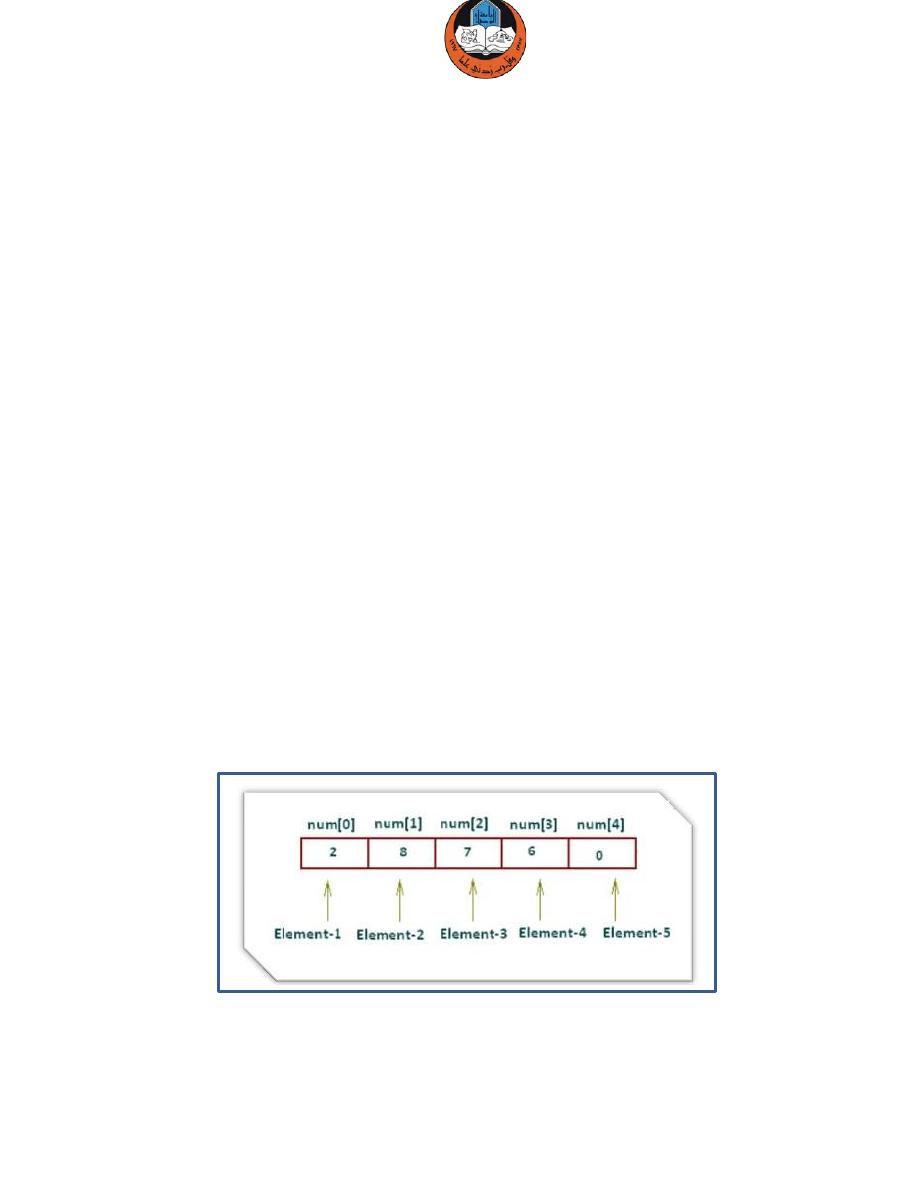
Lecture1: Data structure and algorithms introduction, Program analysis, Array, MATLAB introduction
2
Computer Algorithms
& Programming
Mustafa Al-Qassab
2015-2016 Kirkuk
- Arrays contain data of a single type.
- An array is a sequence of consecutive elements in memory and the start of the
array is the address of its first element.
- Because the starting address of the array in memory is the address of its first
element, and all elements are the same size and type, the compiler can calculate
the locations of the remaining elements. For example, if B is the starting address
of the array, and each element is 4 bytes long, the elements are at addresses
B, B + 4, B + 8, B + 12, and so on, and in general, element array[k] is at address
(B+4*k).
Initializing Declarations
Arrays can be initialized at declaration time in different ways. Examples:
#define MAXSCORES 200
#define NUMFRUIT 5
const int SIZE = 100;
- double numbers[SIZE]; // not initialized
- string fruit[NUMFRUIT] = {"apple","pear","peach","lemon","mango"}; // initialized
The first declaration declares but does not initialize the array named numbers.
The next declares and initializes an array named fruit with five strings:
1-Dimentional array (1D array)
Is an array that has only one way of expanding. Normally it has one row and
many columns. See the figure below:
Figure: 1D array representation
12

Lecture1: Data structure and algorithms introduction, Program analysis, Array, MATLAB introduction
2
Computer Algorithms
& Programming
Mustafa Al-Qassab
2015-2016 Kirkuk
Program #1: write a program to read and print a 4-element 1D array.
#include<iostream>
#include<conio>
void main()
{
int A[4],i;
// reading 1D array elements
cout<<"Enter the elemets of the array[4]"<<endl;
for (i=0;i<4;i=i+1) // a loop for reading elements
cin>>A[i]; // reading the elements from keyboard
// printing 1D array elements
cout<<"The elements of the array are: \n ";
for (i=0;i<4;i++) // a loop for printing elements
cout << A[i] <<" "; // printing the elements one by one
getch(); // to keep the appearance of the resulting window
}
Hint:
You can take any of these programs as a copy-paste and put it directly in
Borland C++ and it will work and show results as they have already been tested.
13

Lecture1: Data structure and algorithms introduction, Program analysis, Array, MATLAB introduction
2
Computer Algorithms
& Programming
Mustafa Al-Qassab
2015-2016 Kirkuk
Program #2: write a program to read two 1D arrays and add them putting the
result in a third array, then print the resulting array.
#include<iostream>
#include<conio>
void main()
{
int A[4],B[4],C[4],i;
// reading 1D array
cout << "enter the first arrays[4] elements"<<endl;
for (i=0;i<4;i=i+1)
cin>>A[i];
// reading 1D array
cout << "enter the second arrays[4] elements"<<endl;
for (i=0;i<4;i++)
cin >> B[i];
// adding two 1D arrays
for (i=0;i<4;i++)
C[i]=A[i]+B[i]; // adding two arrays
// printing the resulting 1D array
cout << "the Summation is" << endl;
for (i=0;i<4;i++)
cout << C[i]<<" "; // printing the resulted array
getch();
}
14

Lecture1: Data structure and algorithms introduction, Program analysis, Array, MATLAB introduction
2
Computer Algorithms
& Programming
Mustafa Al-Qassab
2015-2016 Kirkuk
Program #3: write a program that finds the sum and average of a 1D array.
#include<iostream.h>
#include<conio>
void main()
{
int a[5], i;
float avr, sum=0;
// reading 1D array
cout<<"Enter the elements of the array[5]\n";
for(i=0;i<5;i++)
{
cout<<"\nEnter element No."<<i<<": ";
cin>>a[i];
}
// adding the elements of 1D array to sum
for(i=0;i<5;i++)
sum+=a[i];
// finding and printing average
avr=sum/5;
cout<<"\n The sum= "<<sum<<" & the average= "<<avr<<"\n";
getch();
}
15
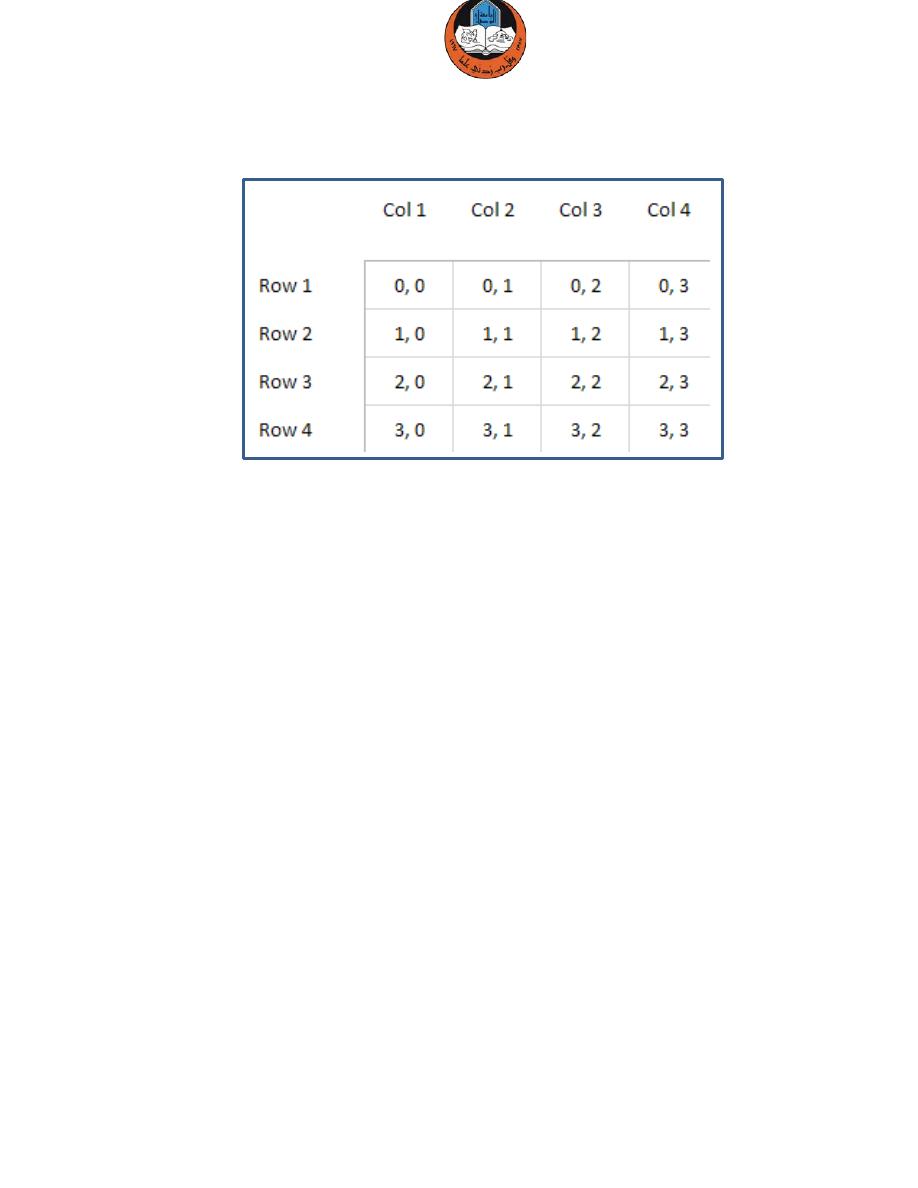
Lecture1: Data structure and algorithms introduction, Program analysis, Array, MATLAB introduction
2
Computer Algorithms
& Programming
Mustafa Al-Qassab
2015-2016 Kirkuk
2-Dimentional array (2D array)
Is an array that expands in two dimensions, row and column. a 4x4 array:
Program #4: write a program that reads then prints a 2D array.
#include<iostream>
#include<conio>
void main()
{
int B[3][4],i,j;
// reading 2D array
cout << "enter the array[3][4] values row by row \n";
for (i=0;i<3;i++) // for the rows
for(j=0;j<4;j++) // for the columns
cin>>B[i][j]; // reading the elements from keyboard
// printing 2D array
cout<<" the array values are";
for (i=0;i<3;i++)
{
cout<< endl; // to make a new line for the next row
for(j=0;j<4;j++)
cout <<B[i][j]<< "\t"; // \t (tab) space between the elements
}
getch();
}
16

Lecture1: Data structure and algorithms introduction, Program analysis, Array, MATLAB introduction
2
Computer Algorithms
& Programming
Mustafa Al-Qassab
2015-2016 Kirkuk
Program #5: write a program to print the elements main diagonal of a square 2D
array on the screen.
#include<iostream.h>
#include<conio.h>
void main()
{
clrscr(); // to clear the screen
int a[4][4],i,j;
// reading the 2D array
cout<<"Enter the elemets of 2D array[4][4]:\n\n";
for(i=0;i<4;i++)
for(j=0;j<4;j++)
{
cout<<"Enter element a["<<i<<"]["<<j<<"]: ";
cin>>a[i][j];
}
// printing the 2D array
cout<<" the array values are";
for (i=0;i<4;i++)
{
cout<< endl; // to make a new line for the next row
for(j=0;j<4;j++)
cout<<a[i][j]<< "\t"; // \t (tab) space between the elements
}
// finding the main diagonal of 2D array
cout<<"\n\nThe main dioginal is:\n";
for(i=0;i<4;i++)
for(j=0;j<4;j++)
if(i==j)
cout<<a[i][j]<<" ";
getch();
}
17

Lecture1: Data structure and algorithms introduction, Program analysis, Array, MATLAB introduction
2
Computer Algorithms
& Programming
Mustafa Al-Qassab
2015-2016 Kirkuk
Program #6: write a program to find the minimum and maximum elements in a
4x4 array.
#include<iostream>
#include<conio>
void main()
{
clrscr();
int a[4][4],i,j;
// reading the 2Darray
cout<<"Enter the elemets of 2D array[4][4]:\n\n";
for(i=0;i<4;i++)
{
for(j=0;j<4;j++)
{
cout<<"Enter element a["<<i<<"]["<<j<<"]: ";
cin>>a[i][j];
}
}
// printing the 2D array
cout<<"\n\nThe 2D array is\n\n";
for(i=0;i<4;i++)
{
cout<<endl;
for(j=0;j<4;j++)
cout<<a[i][j]<<" ";
}
// finding min and max of 2D array
int min,max;
min=max=a[1][1];
cout<<"\n\nFinding min & max\n";
for(i=0;i<4;i++)
for(j=0;j<4;j++)
{
if(a[i][j]>max)
18

Lecture1: Data structure and algorithms introduction, Program analysis, Array, MATLAB introduction
2
Computer Algorithms
& Programming
Mustafa Al-Qassab
2015-2016 Kirkuk
max=a[i][j];
else if(a[i][j]<min)
min=a[i][j];
}
cout<<"min = "<<min<<" & max = "<<max;
getch();
}
Homework2:
Write a program to find minimum and maximum elements in a 5-element 1D
array.
Homework3:
Write a program to find the secondary diagonal in a 4x4 2D array.
Functions
Function prototype
- Tells compiler argument type and return type of function
int square( int );
Function takes an int and returns an int
- Function name;
- Parameters (number and data type)
- Return type (void if returns nothing)
-
Format for function definition
return-value-type function-name( parameter-list )
{
declarations and statements
}
- Parameter list: comma separated list of arguments.
- Data type needed for each argument.
- Return-value type: data type of result returned
(use void if nothing returned).
Functions cannot be defined inside other functions.
19

Lecture1: Data structure and algorithms introduction, Program analysis, Array, MATLAB introduction
2
Computer Algorithms
& Programming
Mustafa Al-Qassab
2015-2016 Kirkuk
Call by Value Vs. Call by Reference
Example: the following program is the same program as Example2 but it uses
functions instead of writing the whole program in the main body.
Call by value (used by default)
– Copy of data passed to function
– Changes to copy do not change original
– Prevent unwanted side effects
Why should I need call by value?
– It is safer
•Arguments protected from side effects
•It works with a copy of the arguments passed in
the function call
– But, it implies overhead
•Memory space and time needed to make the
copies. What if an argument is many bytes long?
int squareByValue(int a)
{
return a *= a; //a = a * a;
}
Call by reference
– Function can directly
access data
– Changes affect original
Why should I need call by
reference?
– Efficiency
int squareByRef (int &b)
{
return b *= b; //b = b * b;
}
To Summarize
20

Lecture1: Data structure and algorithms introduction, Program analysis, Array, MATLAB introduction
2
Computer Algorithms
& Programming
Mustafa Al-Qassab
2015-2016 Kirkuk
#include<iostream>
#include<conio>
#define size 5
int a[size],b[size],c[size],i;
void reading(int x[size])
{
cout<<"Enter the elements of array[5]: \n";
for(i=0;i<size;i++)
cin>>x[i];
}
void printing(int x[size])
{
cout<<"\nThe array is: \n";
for(i=0;i<size;i++)
cout<<x[i]<<" ";
}
void adding()
{
for(i=0;i<size;i++)
c[i]=a[i]+b[i];
}
void main()
{
reading(a);
reading(b);
cout<<"\n\n\nPrinting the first array \n";
printing(a);
cout<<"\n\n\nPrinting the second array \n";
printing(b);
adding();
cout<<"\n\n\nPrinting the resulted array after addition \n";
printing(c);
getch();
}
21
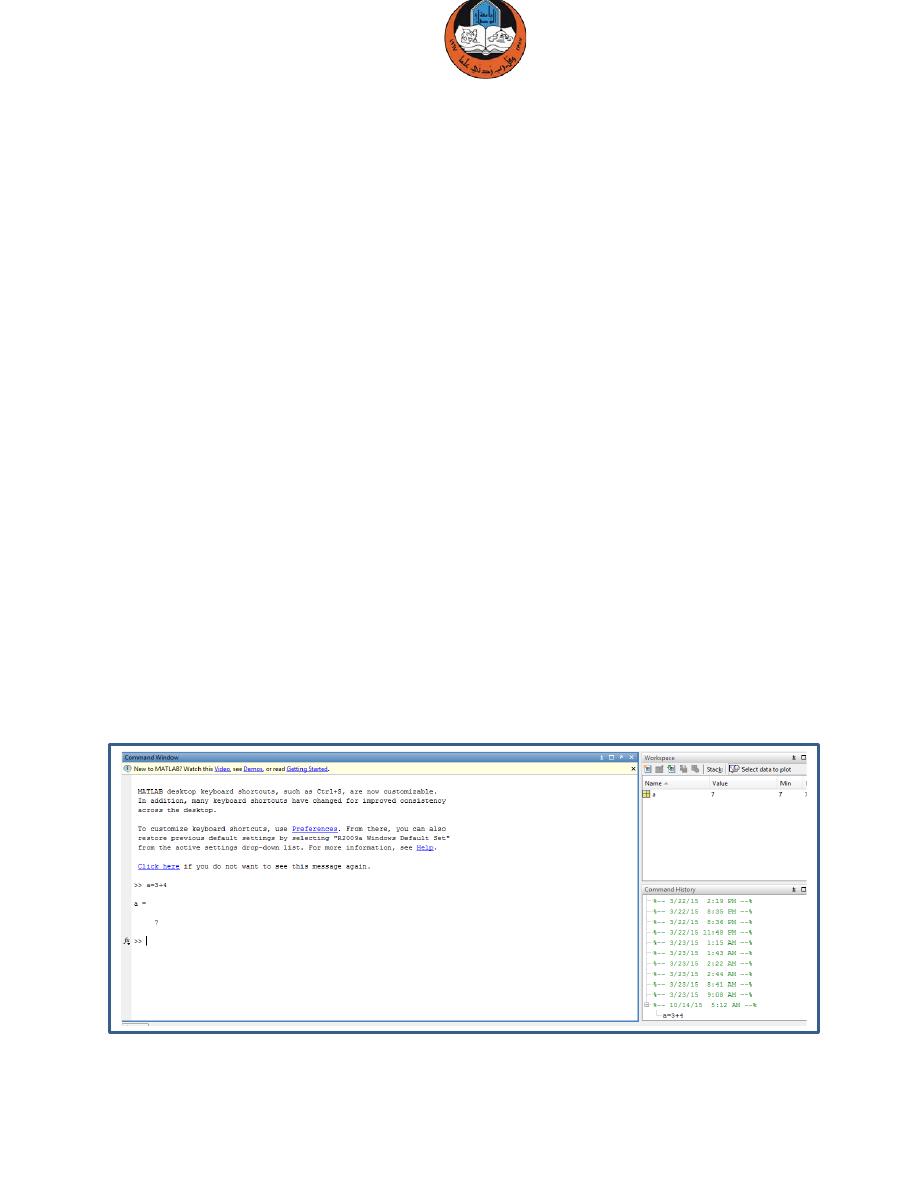
Lecture1: Data structure and algorithms introduction, Program analysis, Array, MATLAB introduction
2
Computer Algorithms
& Programming
Mustafa Al-Qassab
2015-2016 Kirkuk
Introduction to MATLAB
MATLAB, short for MATrix LABoratory is a programming package specifically
designed for quick and easy scientific calculations and I/O. It has literally
hundreds of built-in functions for a wide variety of computations and many
toolboxes designed for specific research disciplines, including statistics,
optimization, solution of partial differential equations, data analysis.
This figure below shows the window in which you interact with MATLAB. The
main window on the left is called the Command Window. You can see the
command prompt in this window, which looks like >>. If this prompt is visible
MATLAB is ready for you to enter a command. In the figure, you can see that we
typed in the command a=3+4.
In the top right corner you can view the Workspace window. The Workspace
window will show you all variables that you are using in your current MATLAB
session. In this example, the workspace contains the variable 'a'. When you first
start up MATLAB, the workspace is empty. In the bottom right corner you can
see the Command History window, which simply gives a chronological list of all
MATLAB commands that you used, and the Current Directory window which
shows you the contents and location of the directory you are currently working in.
Now, let's try a simple command. Next to the prompt in the Command Window
type a=3+4 and then press 'enter' to activate this command. On the screen you
should see a= 7
Figure: The main window of MATLAB.
22
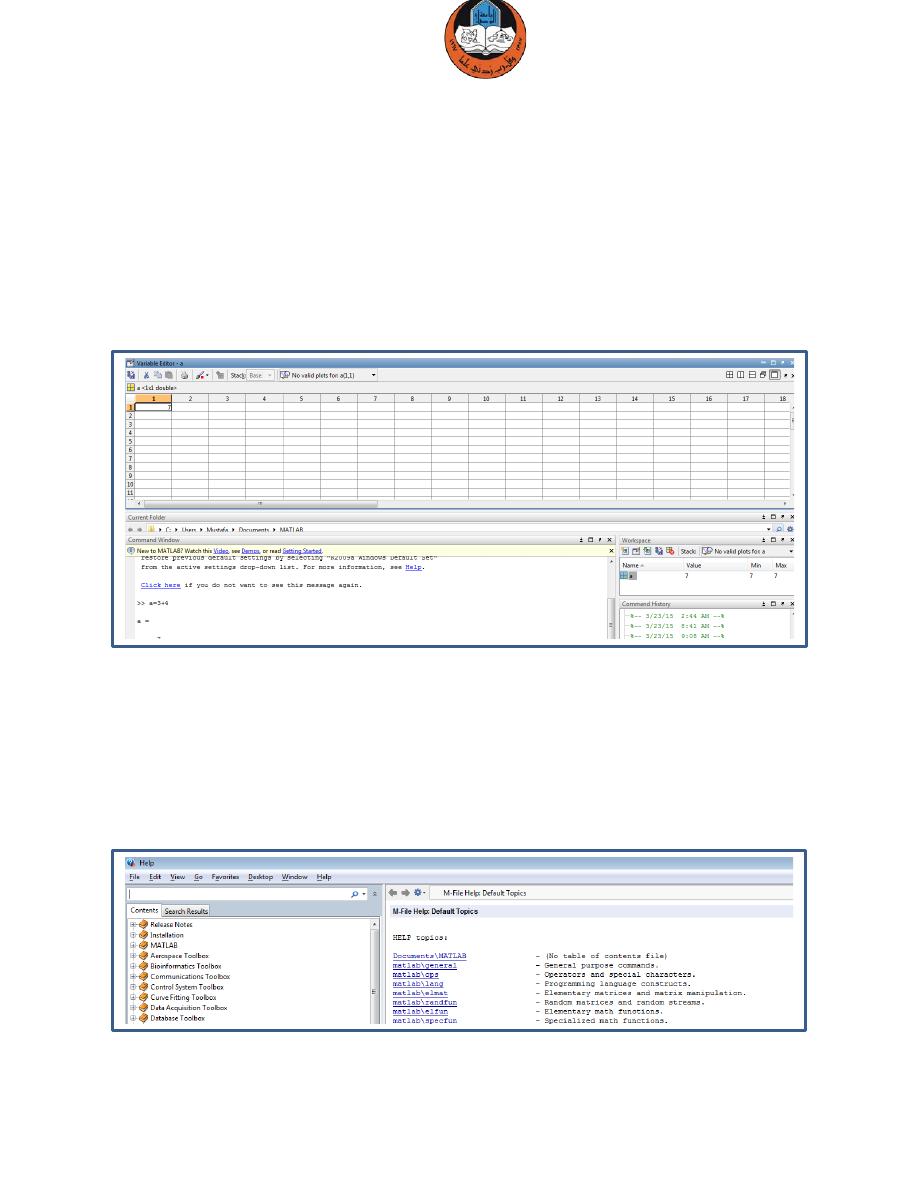
Lecture1: Data structure and algorithms introduction, Program analysis, Array, MATLAB introduction
2
Computer Algorithms
& Programming
Mustafa Al-Qassab
2015-2016 Kirkuk
Notice how MATLAB carries out this command immediately, and gives you the
prompt >> for your next command. Here, a variable called 'a' is created by
MATLAB and assigned the value of 7. MATLAB stores the variable a in its
workspace until you exit MATLAB or tell MATLAB to delete the variable.
Go to the Workspace window and check that the variable a is in your workspace.
You will see in this window that a is stored in 8 bytes, see figure below, that it is a
double and that it has size 1x1. In the Workspace window, double click on the
name 'a'. A small window will pop up displaying a’s value.
Figure: Workspace window.
- Type the command help in the Command Window to find a long list of all
different categories for which there are MATLAB commands. Each of the listed
categories contains more detailed information about available MATLAB
functions.
- Type help ops to find a list of MATLAB operators. You can see from this list, for
example, that more information about addition can be found in help arith .
- Type helpwin to launch the help window shown below.
Figure: Help window in MATLAB
23

Lecture1: Data structure and algorithms introduction, Program analysis, Array, MATLAB introduction
2
Computer Algorithms
& Programming
Mustafa Al-Qassab
2015-2016 Kirkuk
Create Variables
This example shows several ways to assign a value to a variable.
x = 5.71;
A = [1 2 3; 4 5 6; 7 8 9];
You do not have to declare variables before assigning values.
If you do not end an assignment statement with a semicolon (;), MATLAB®
displays the result in the Command Window. For example,
x = 5.71 displays x = 5.7100
If you do not explicitly assign the output of a command to a variable, MATLAB
generally assigns the result to the reserved word ans. For example,
5.71 returns ans = 5.7100
The value of ans changes with every command that returns an output value that
is not assigned to a variable.
Create Numeric Arrays
This example shows how to create a numeric variable. In the MATLAB
computing environment, all variables are arrays, and by default, numeric
variables are of type double (that is, double-precision values). For example,
create a scalar value.
A = 100;
Because scalar values are single element, 1-by-1 arrays,
whos A returns
Name Size Bytes Class Attributes
A 1x1 8 double
To create a matrix (a two-dimensional, rectangular array of numbers), you can
use the [ ] operator, for example:
B = [12, 62, 93, -8, 22; 16, 2, 87, 43, 91; -4, 17, -72, 95, 6]
When using this operator, separate columns with a comma or space, and
separate rows with a semicolon. All rows must have the same number of
elements. In this example, B is a 3-by-5 matrix (that is, B has three rows and five
columns).
B = 12 62 93 -8 22
16 2 87 43 91
-4 17 -72 95 6
A matrix with only one row or column (that is, a 1-by-n or n-by-1 array) is a
vector, such as
C = [1, 2, 3] or D = [10; 20; 30]
24
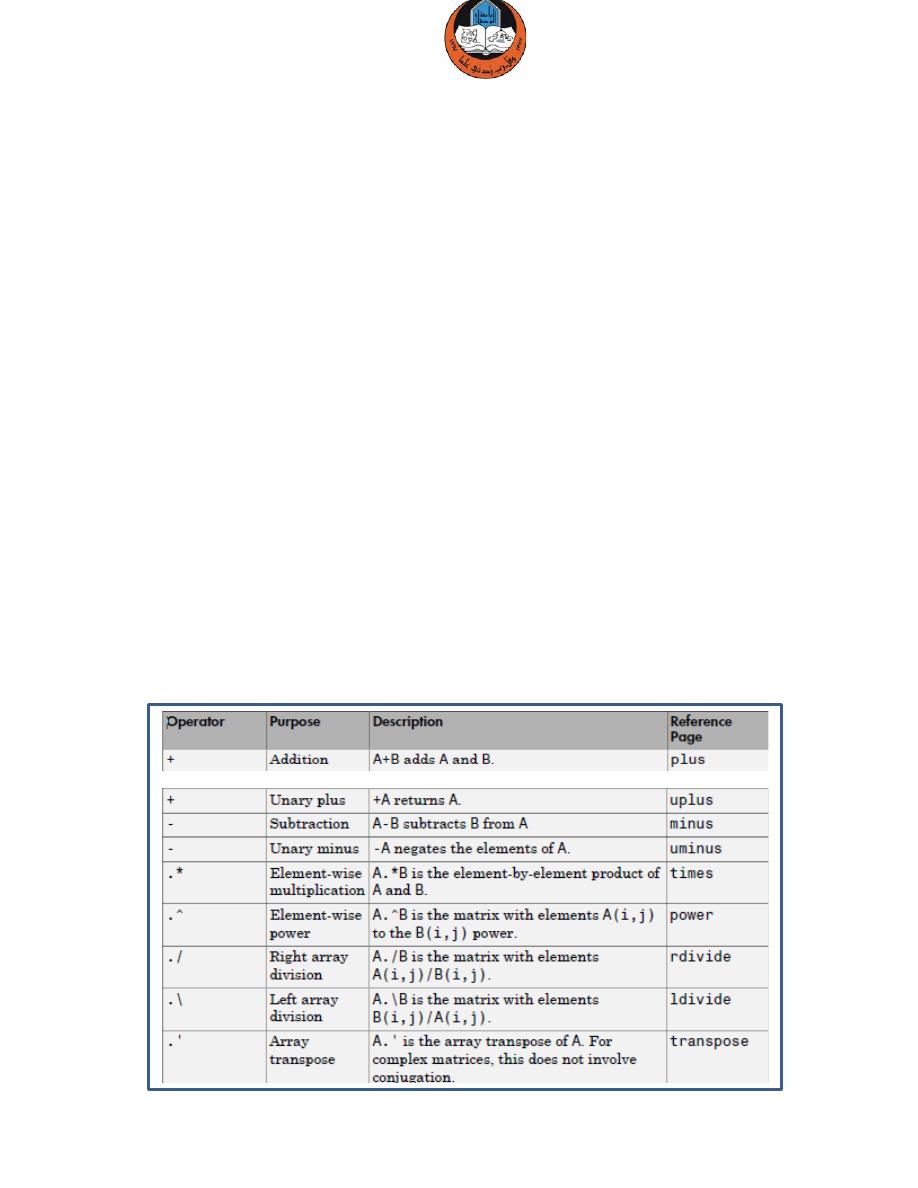
Lecture1: Data structure and algorithms introduction, Program analysis, Array, MATLAB introduction
2
Computer Algorithms
& Programming
Mustafa Al-Qassab
2015-2016 Kirkuk
Call Functions
These examples show how to call a MATLAB function. To run the examples, you
must first create numeric arrays A and B, such as:
A = [1 3 5];
B = [10 6 4];
Enclose inputs to functions in parentheses:
max(A) % ans = 5
Separate multiple inputs with commas:
max(A,B) % ans = 10 6 5
Store output from a function by assigning it to a variable:
maxA = max(A) % ans = maxA = 5
Enclose multiple outputs in square brackets:
[maxA, location] = max(A) % ans = maxA = 5 location = 3
Call a function that does not require any inputs, and does not return any outputs,
by typing only the function name:
Clc % clears the screen (clear screen)
Enclose text string inputs in single quotation marks:
disp('hello world') % hello world
Array Operations
As a simple example, you can add two vectors with the same length.
A = [1 1 1] % A = 1 1 1
B = 1:3 % B = 1 2 3
A+B % ans = 2 3 4
25
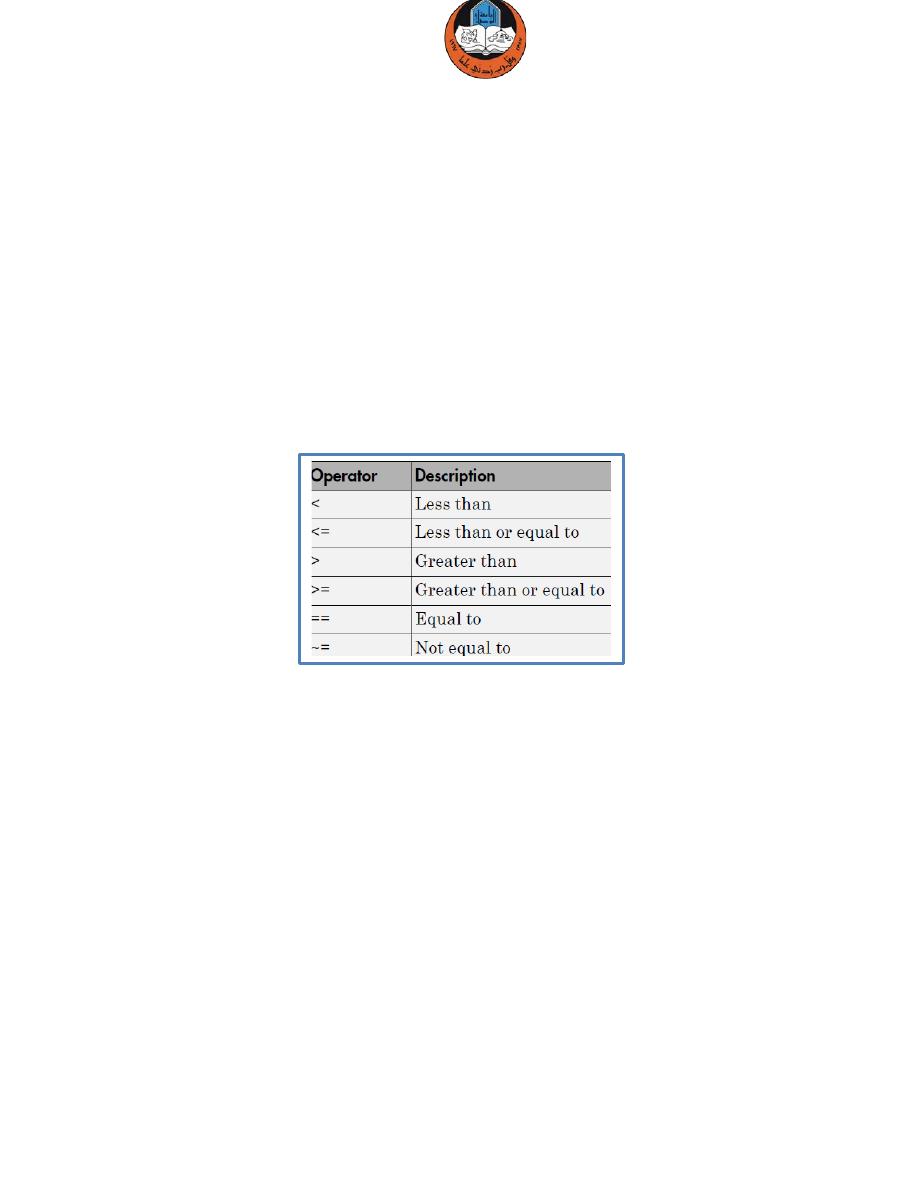
Lecture1: Data structure and algorithms introduction, Program analysis, Array, MATLAB introduction
2
Computer Algorithms
& Programming
Mustafa Al-Qassab
2015-2016 Kirkuk
A = [1 3;2 4] % A = 1 3
2 4
B = [3 0;1 5] % B = 3 0
1 5
A*B % ans = 6 15
10 20
The previous matrix product is not equal to the following element-wise product.
A.*B % ans = 3 0
2 20
Relational Operators
Relational operators compare operands quantitatively, using operators like “less
than” and “not equal to.” The following table provides a summary.
Relational Operators and Arrays
The MATLAB relational operators compare corresponding elements of arrays
with equal dimensions. Relational operators always operate element-by-element.
In this example, the resulting matrix shows where an element of A is equal to the
corresponding element of B.
A = [2 7 6;9 0 5;3 0.5 6];
B = [8 7 0;3 2 5;4 -1 7];
A == B % ans = 0 1 0
0 0 1
0 0 0
26
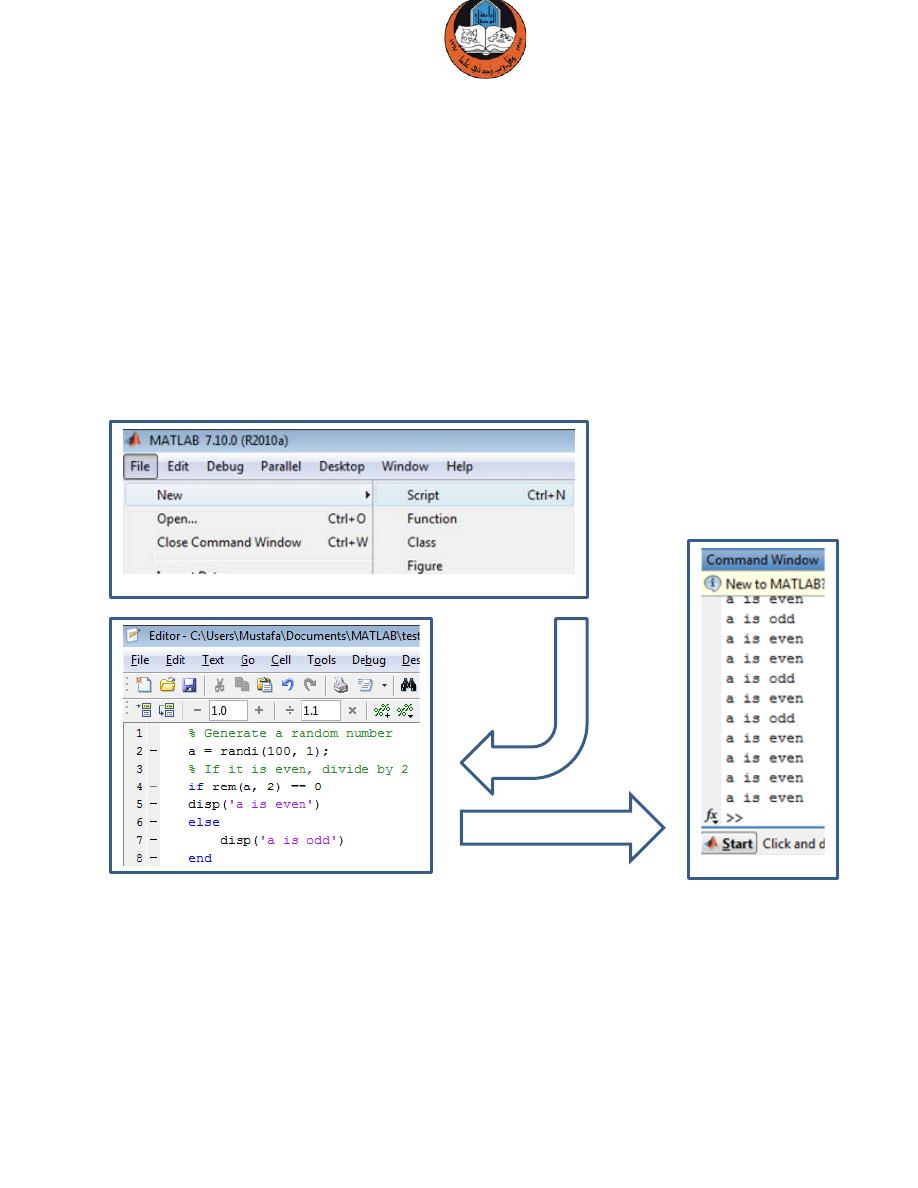
Lecture1: Data structure and algorithms introduction, Program analysis, Array, MATLAB introduction
2
Computer Algorithms
& Programming
Mustafa Al-Qassab
2015-2016 Kirkuk
Conditional Statements
Conditional statements enable you to select at run time which block of code to
execute. It can be written in M-file as shown in the figures below.
The simplest conditional statement is an if statement. For example:
% Generate a random number
a = randi(100, 1);
% If it is even, divide by 2
if rem(a, 2) == 0
disp('a is even')
b = a/2;
end
Displaying Results
Creating
M-file
27

Lecture1: Data structure and algorithms introduction, Program analysis, Array, MATLAB introduction
2
Computer Algorithms
& Programming
Mustafa Al-Qassab
2015-2016 Kirkuk
if statements can include alternate choices, using the optional keywords elseif or
else. For example:
a = randi(100, 1);
if a < 30
disp('small')
elseif a < 80
disp('medium')
else
disp('large')
end
Loop Control Statements
With loop control statements, you can repeatedly execute a block of code. There
are two types of loops:
1- for statements loop a specific number of times, and keep track of each iteration
with an incrementing index variable. Example:
sum=0;
for
n=1:10
sum=sum+n;
end
disp(
'sum='
);
disp(sum);
2- while statements loop as long as a condition remains true. Example:
sum=0;
n=10;
while
n>0
sum=sum+n;
n=n-1;
end
disp(
'sum='
);
disp(sum);
Each loop requires the end keyword.
Homework4:
Write a MATLAB code that finds and displays the multiplication of numbers from
5 to 10 using a loop.
28
